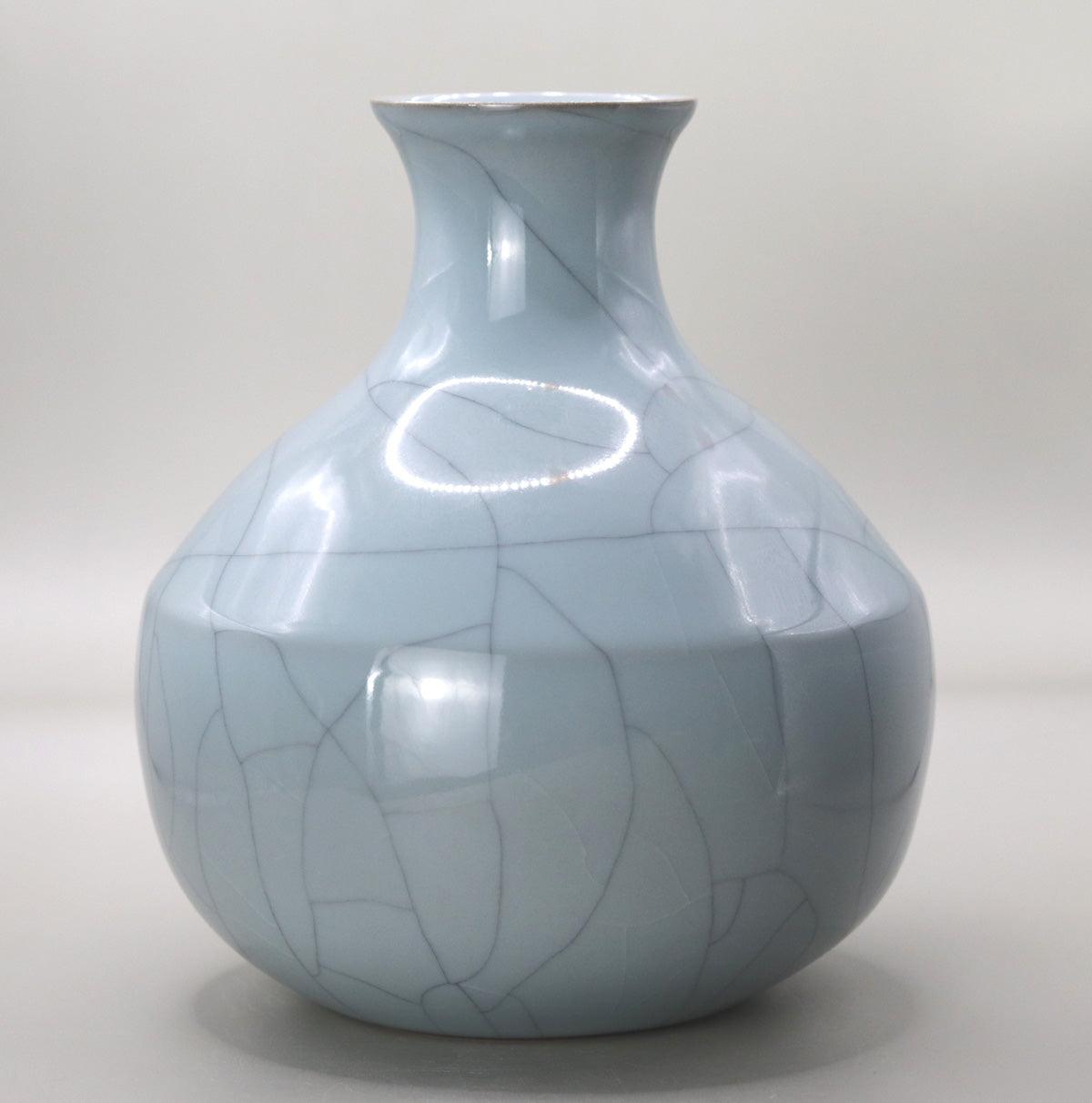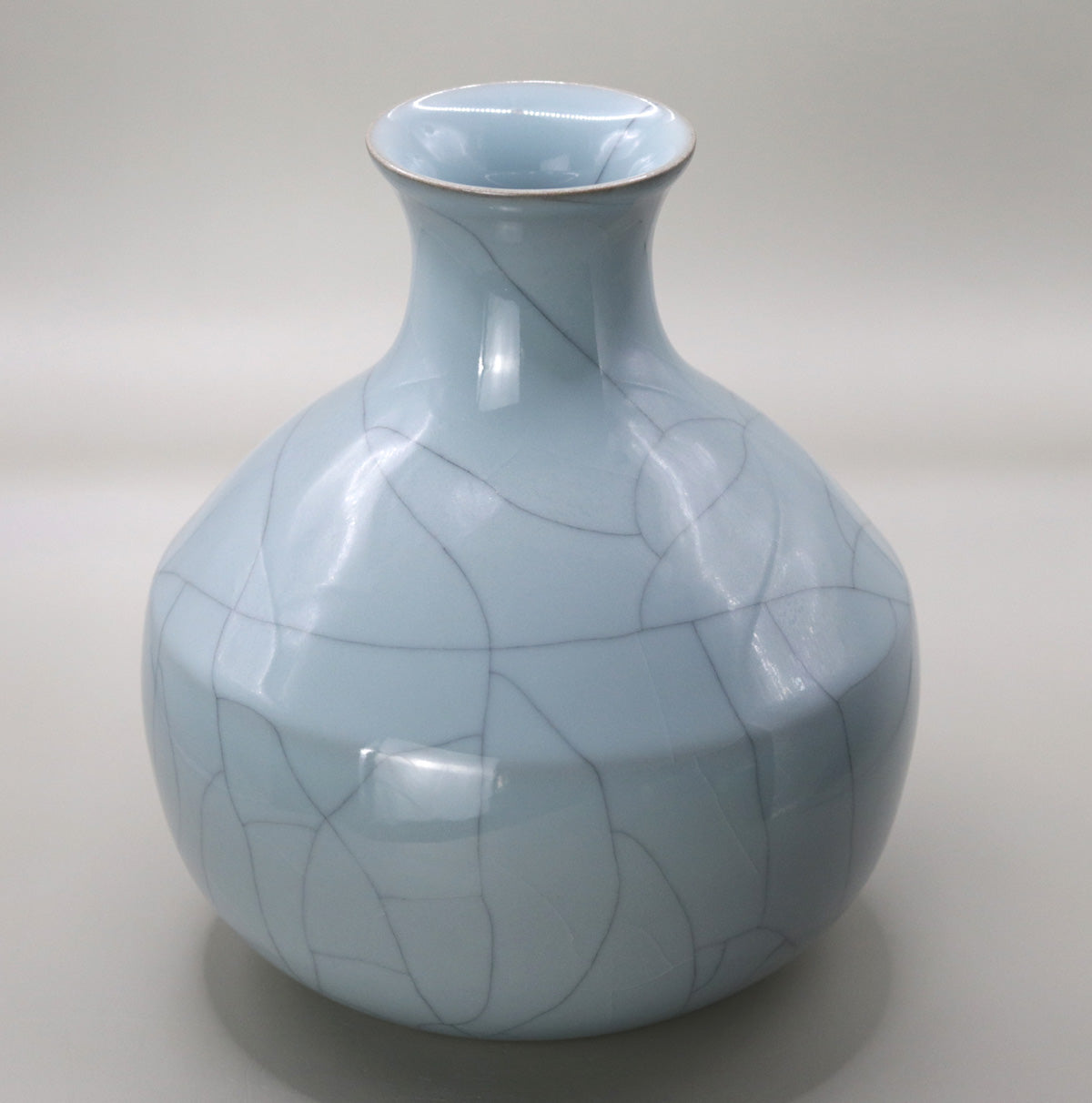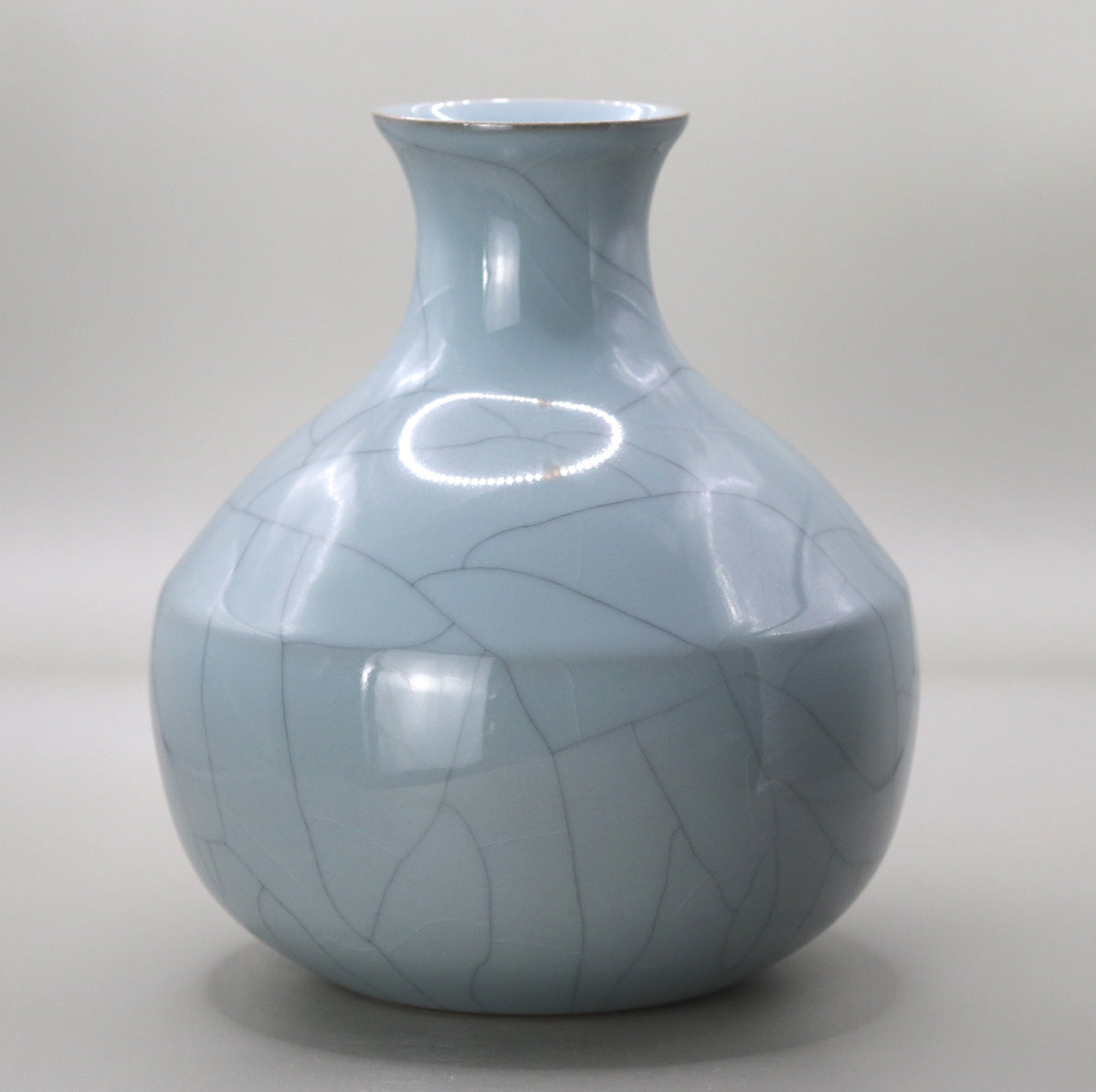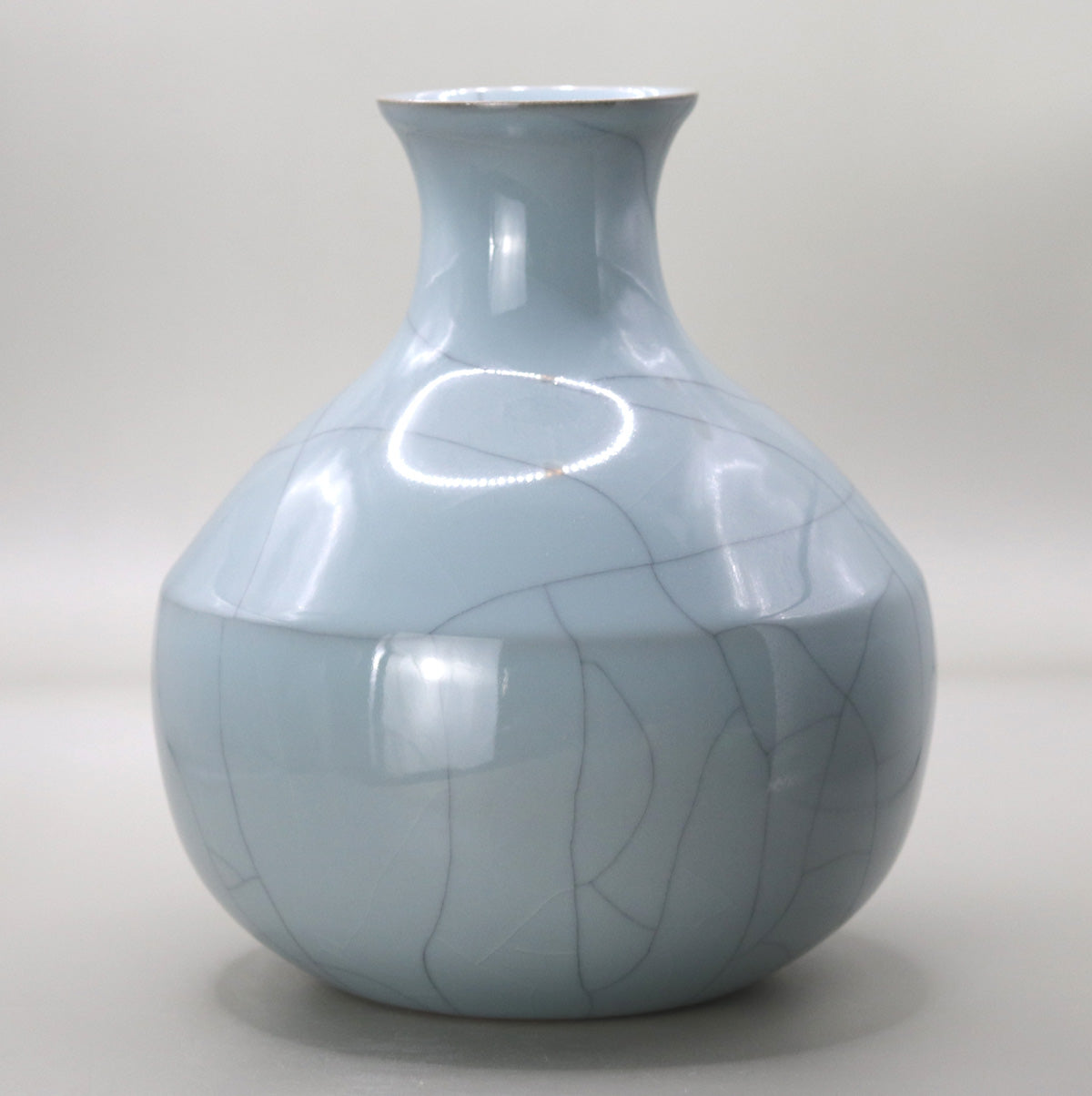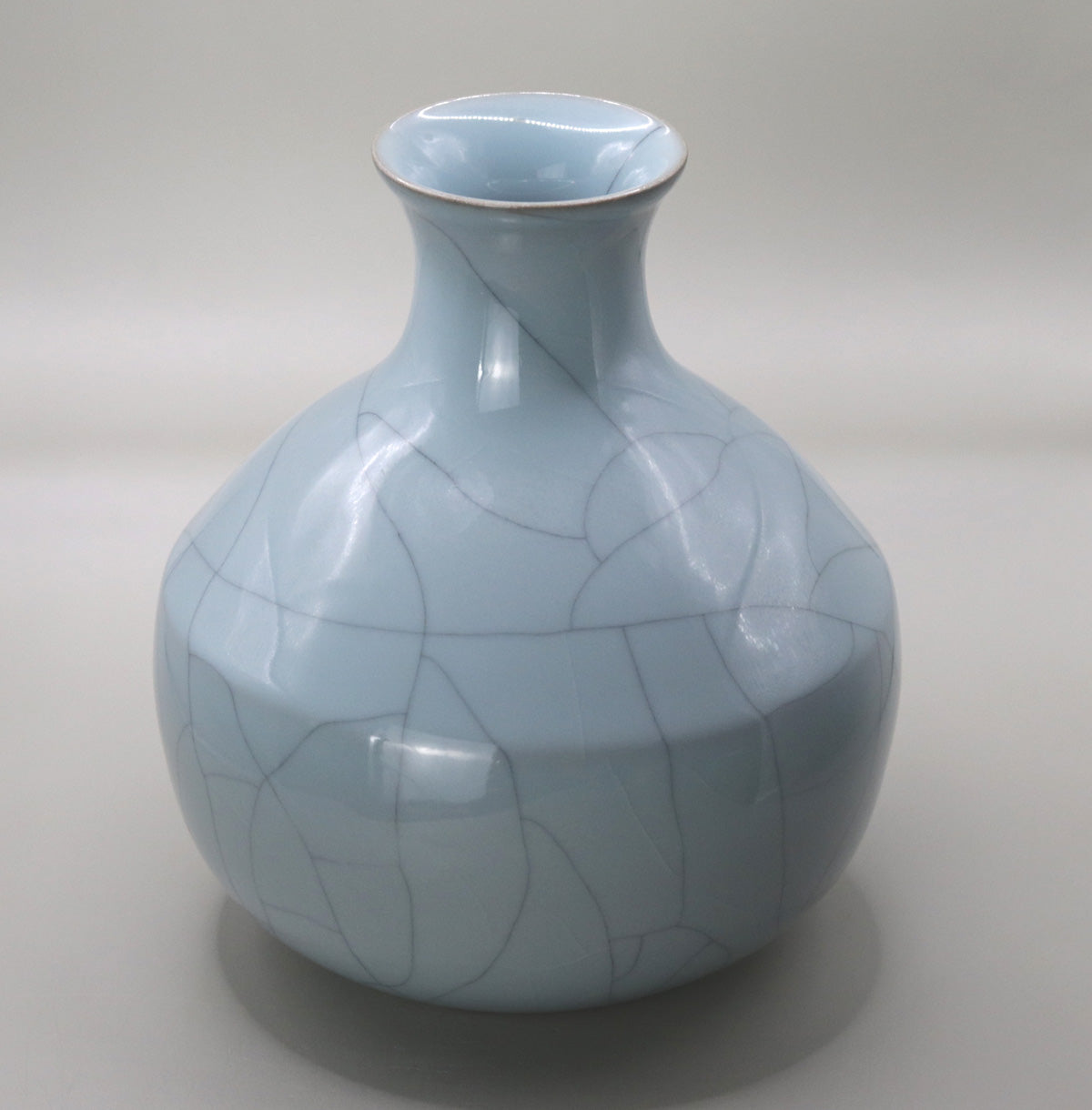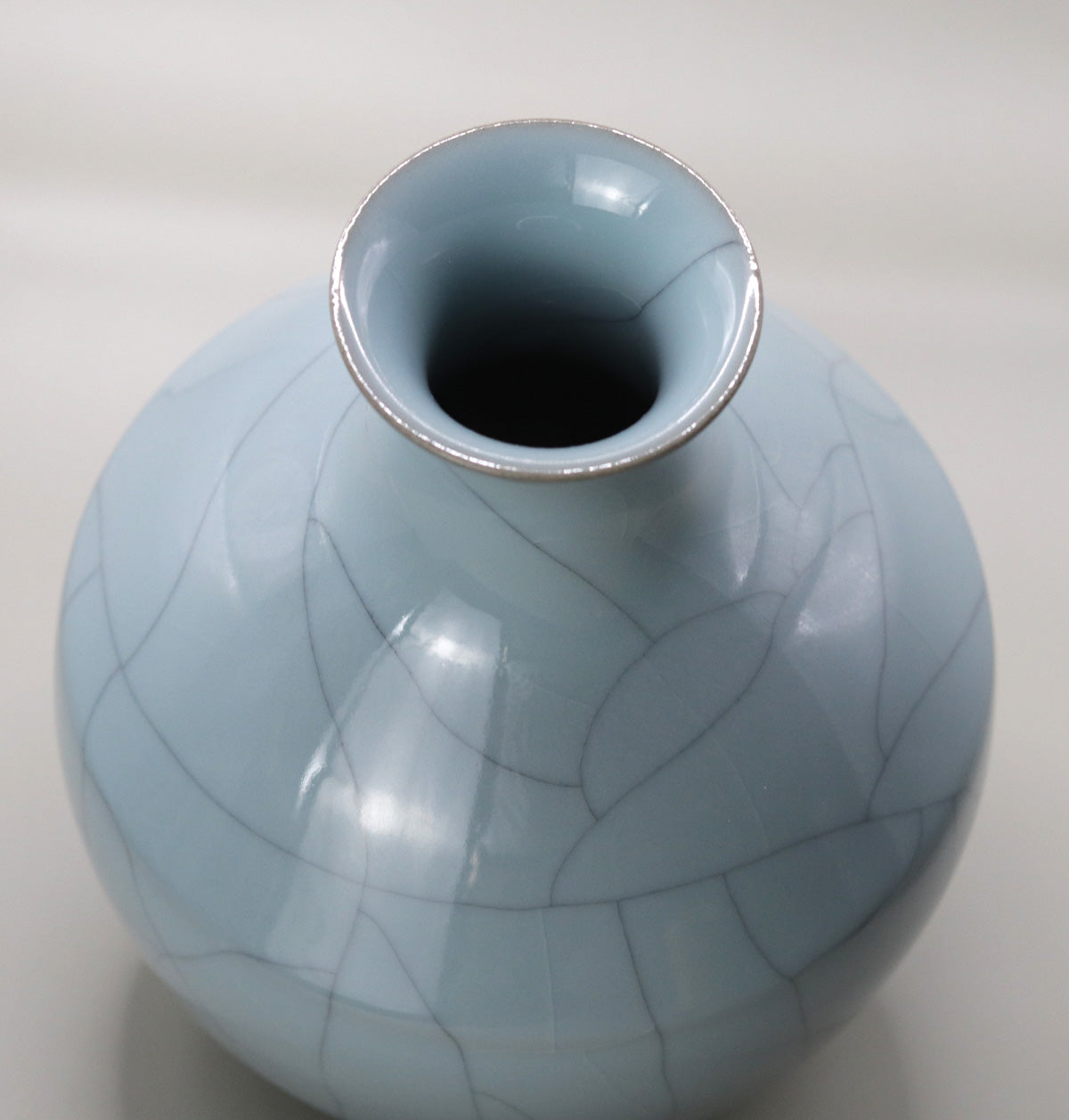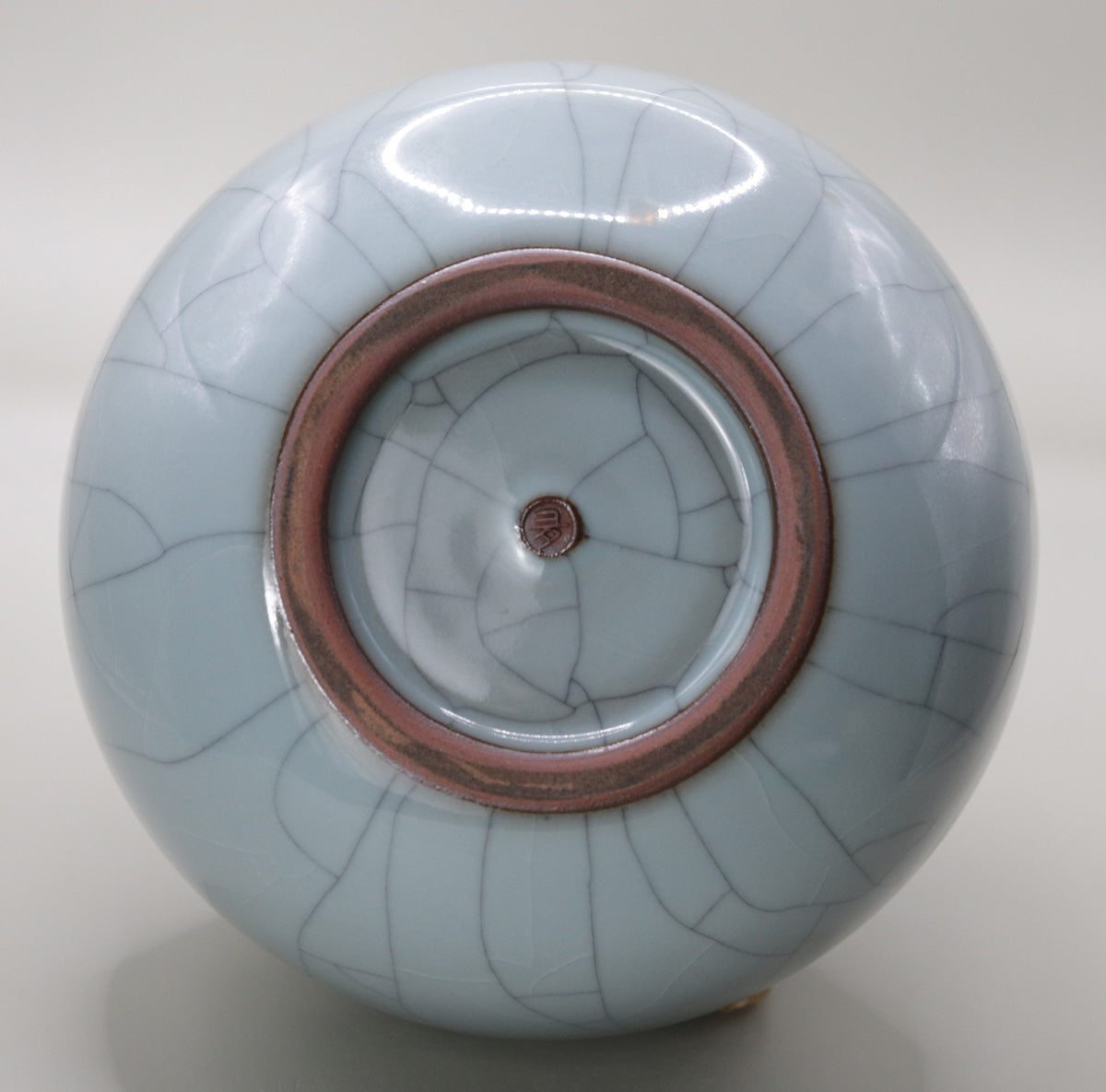Blue gourd vase Masao Tagai
Blue gourd vase Masao Tagai
Couldn't load pickup availability
Width: 19.5cm x 19.5cm Height: 20cm
Celadon flower vase by Masao Tagai
1. Overview of works
This vase features a large, gentle craze beneath a pale sky-blue celadon glaze. The lines that flow from the large, bulging vase shape to the narrow, tapered neck and slightly outward-curving rim are reminiscent of the classic "Gyokko Shunbei" vase, but the slightly acute angle of the shoulders gives it a sharpness that stands out in a modern space. The mirror-like surface of the celadon glaze softly captures the surrounding light, and the craze lines emerge like ink writing, reminiscent of an abstract painting.
2. Shape and design
| part | Features of the design | Aesthetic effect |
|---|---|---|
| Mouth rim | A slightly open trumpet shape. A dull silver-gray color derived from iron appears, tightening the pale blue. | It brings out the colours of the flowers and naturally draws the eye to the centre. |
| neck | It rises smoothly from the torso, protrudes at the shoulders, and then smoothly curves out. | It gives a sense of tension to the entire vessel, creating strengths and weaknesses in its form. |
| Body | It has an almost spherical volume. The ridges created by the folds from the shoulders to the torso reflect light and create shadows. | It reflects the surrounding scenery and light sources, creating a unified look with the space. |
3. Glaze and Crazing
Glaze design : The iron glaze is adjusted and fired at a high temperature in a reduction process, after which the atmosphere is switched to an oxidizing atmosphere in the final stages, resulting in a pure blue color with no reddish tinge.
Formation of large cracks : The difference in the expansion coefficient between the clay and the glaze layer is deliberately large, and bold cracks are created on the glaze surface by rapid cooling after firing. The cracks that cross the curved surface have a rhythm of thick and thin, creating a bold expression reminiscent of the grain pattern of natural stone.
Ink dyeing process : After firing, brown colored water is boiled and soaked in to color the crazing. The lines stand out clearly, and the vessel stands out even from a distance. With repeated use, the lines deepen with the addition of water and humidity, allowing you to enjoy the changes that occur over time.
4. Technical background
Masao Tagai is a full member of the Japan Crafts Association and has been studying celadon as his specialty. His "rain-filled blue" color, which is achieved through thick glaze and advanced reduction control, is said to be comparable to that of Song Dynasty Longquan kilns, and he has received high praise at solo exhibitions in Kyoto and Tokyo. In this work, he blended a large amount of feldspar into the clay and designed it to have a higher expansion rate than the glaze, establishing a unique mixture that allows the thick glaze to form large crazes without peeling.
5. Historical Context
Celadon originated from the Yueshu kilns of the Six Dynasties, and developed into the light blue of the Ru kilns of the Northern Song Dynasty and the deep blue of the Longquan kilns of the Southern Song Dynasty. It was introduced to Japan during the Kamakura and Muromachi periods along with Zen, and a unique aesthetic sense was fostered in the Momoyama tea ceremony that appreciated "crazing" as a scene of wabi. This work combines the lake-like blue of Longquan kilns with the bold crazing design favored in early modern Japan, sublimating it into a form that responds to modern tea ceremonies and modern spaces.
6. Combination with flower materials
| season | Main recommended flower materials | Key points of the analysis |
|---|---|---|
| spring | Magnolia, weeping cherry | The taut trunk absorbs the movement of the flower branches, and the pale blue reflects the pale pink of the petals. |
| summer | Kudzu, Hangeshi | The cool feel of the glaze surface echoes the white underside of the leaves, bringing a refreshing feeling to the tokonoma alcove. |
| autumn | Openwork lily, amagasaki | The thin neck stabilizes the flower head, and the penetration lines and the lines of the flower stem resonate with each other to form a dynamic rhythm. |
| winter | Cold peony, Nanten | The tranquility of the blue glaze evokes red berries and white snowflakes, creating a dignified scene. |
7. Points to note when viewing
The beauty of reflections <br data-start="1589" data-end="1592">The spherical body of the piece softly captures the surrounding light and reflects the shadows of hanging scrolls and lanterns like a mirror. At the tea ceremony, it is effective to bring a candle close to it and project the flickering light.
Rhythm of interpenetrating lines <br data-start="1682" data-end="1685">As you shift your viewpoint, the lines overlap, creating a sense of depth, as if seaweed or stone patterns were floating below the surface.
Changes in the iron rim over time <br data-start="1750" data-end="1753">The iron rust on the rim will take on a black luster when exposed to water or to the touch, further tightening the pale blue and ink lines.
8. Conclusion
Masao Tagai's "Celadon Vase" is a masterpiece that combines the power of a clear blue color, large crazes, and the elegance of a classical vase shape. When placed in a space, the mirror surface will absorb the surroundings, and when a seasonal flower is placed inside, the vase and the flower will respond to each other, creating a beautiful landscape. The change in the craze deepens over the years, and the blue will fade to a dull color - this is the true joy of a vase that grows together with its user. We hope that you will spend many years interacting with the flowers of each season and carving your own story into it.
Share
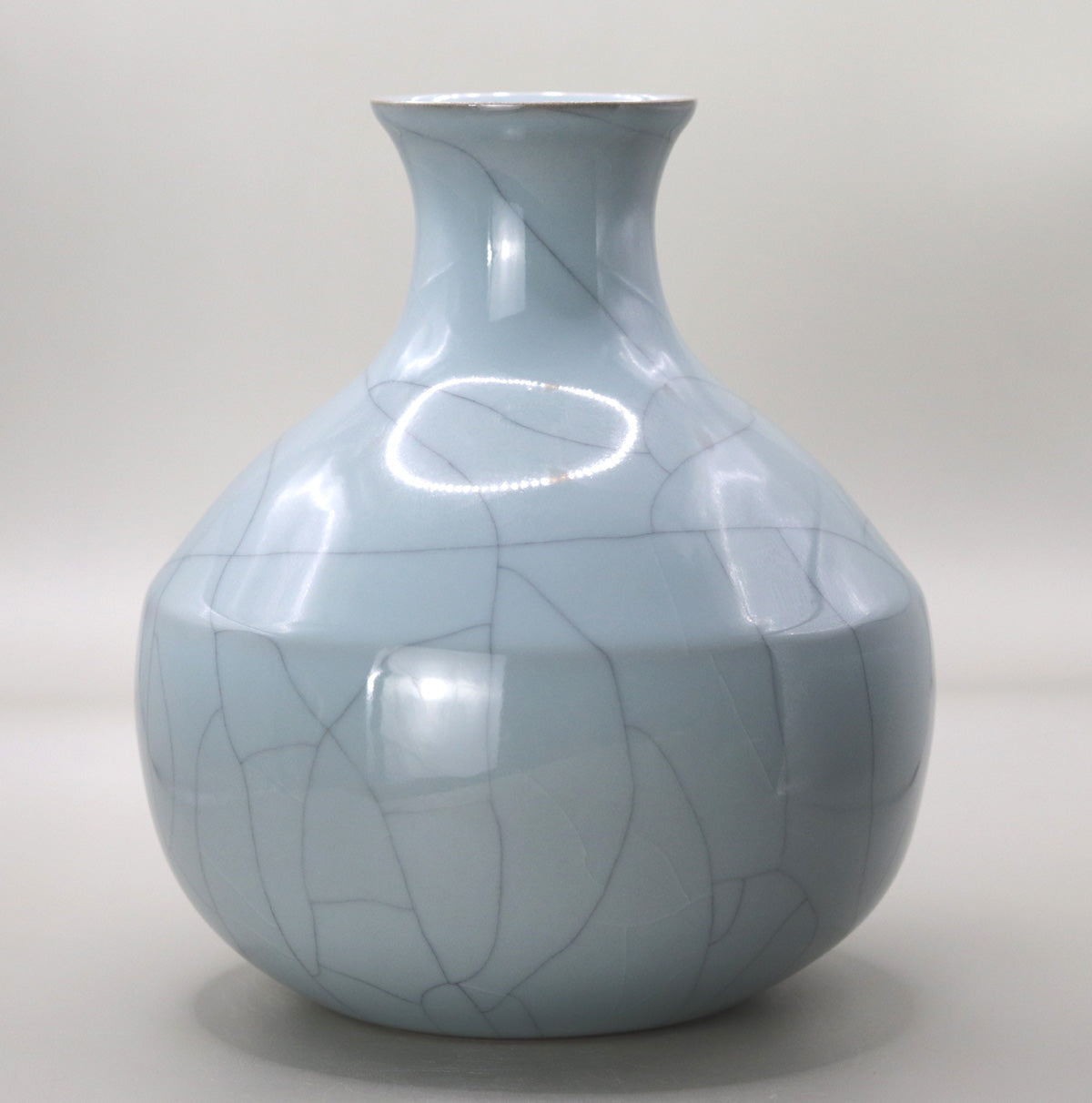
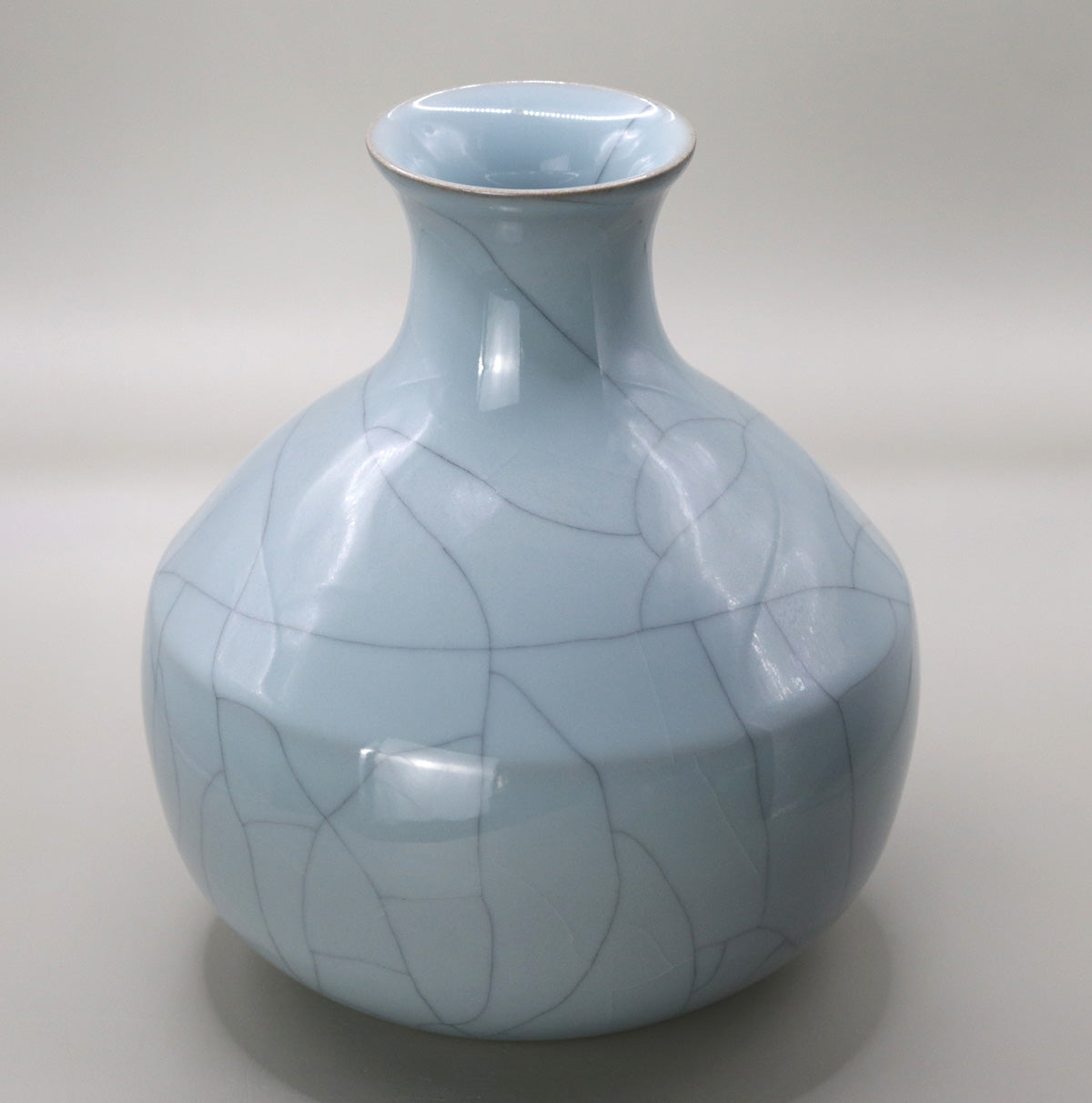
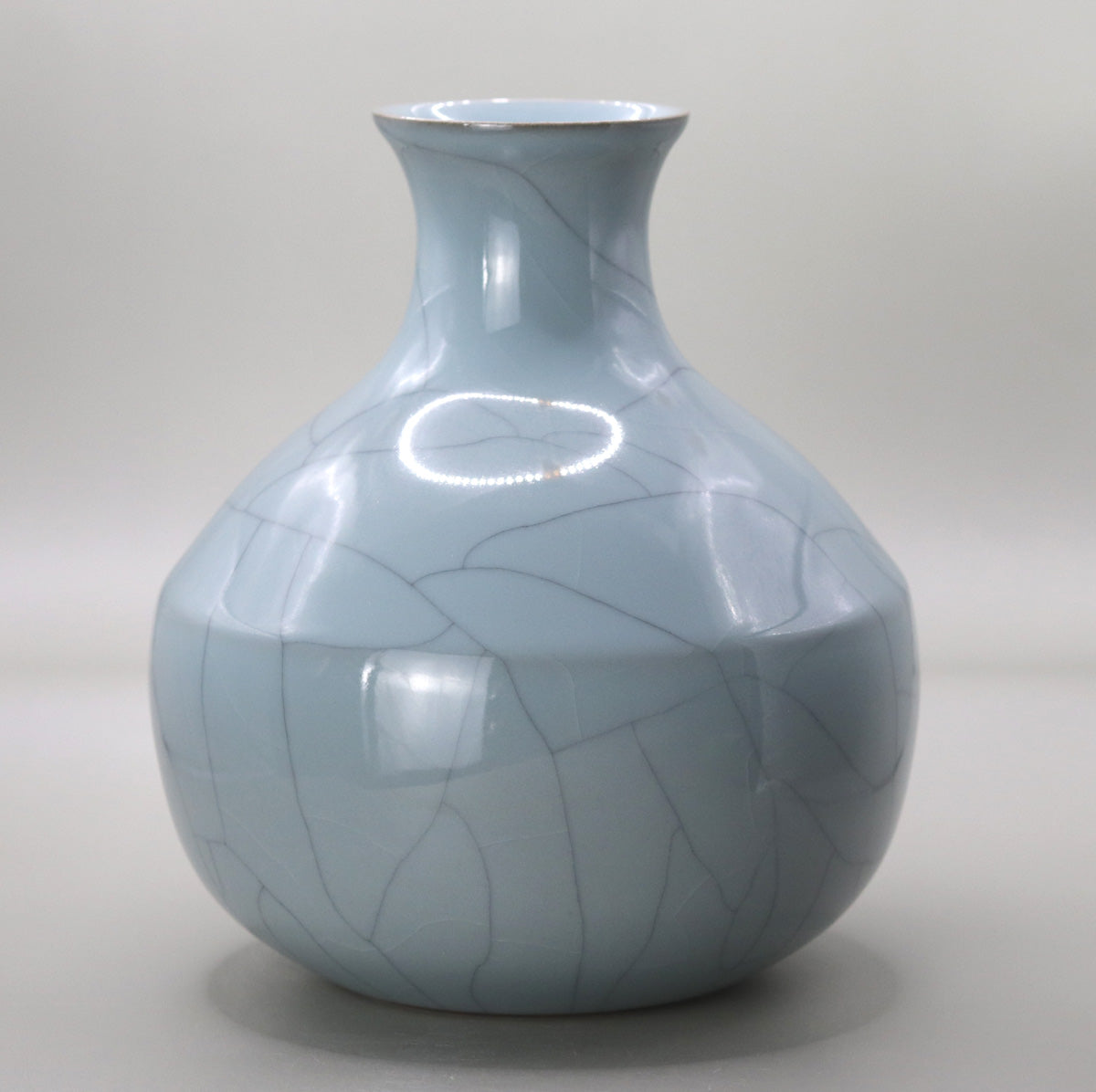
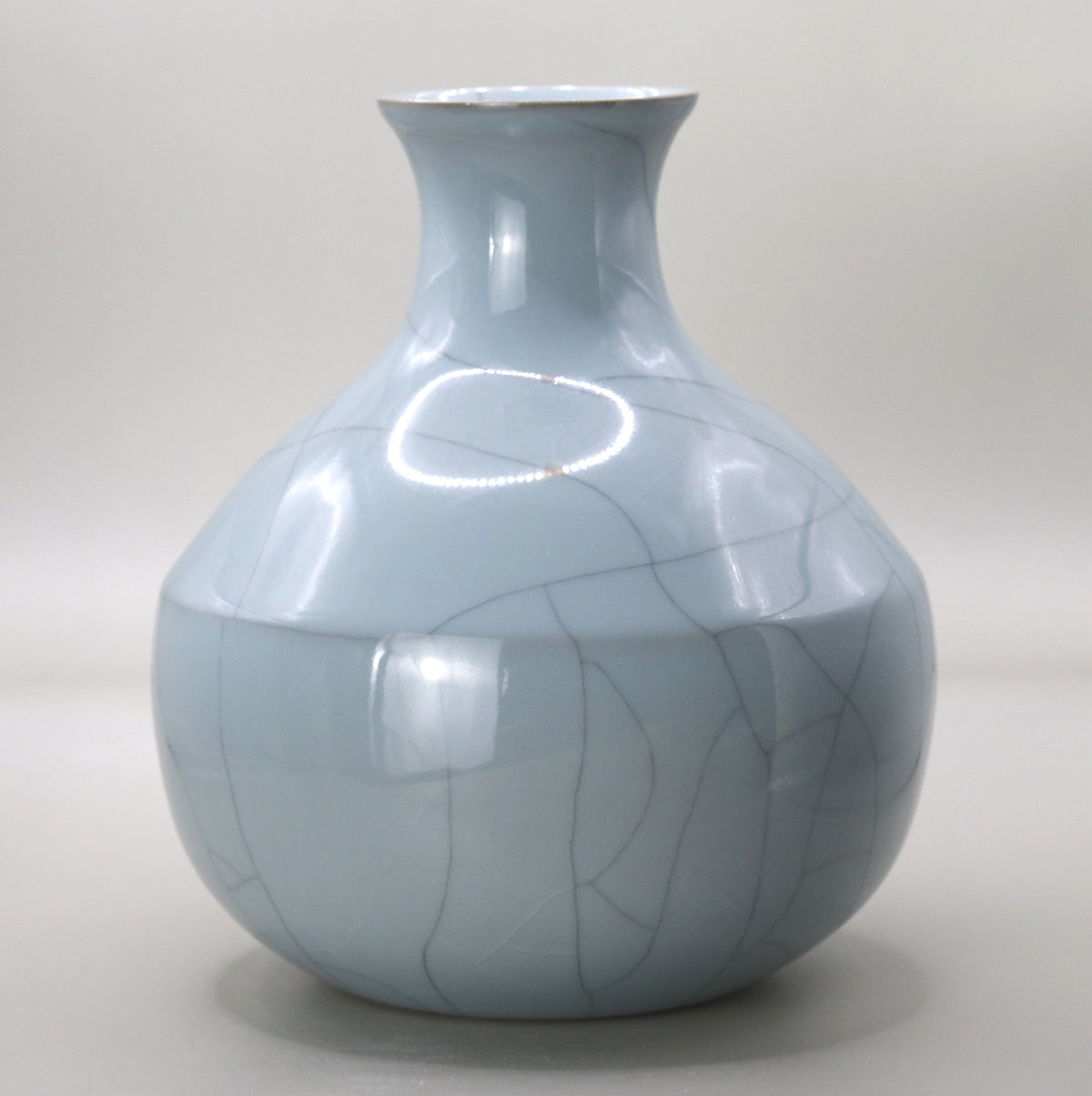
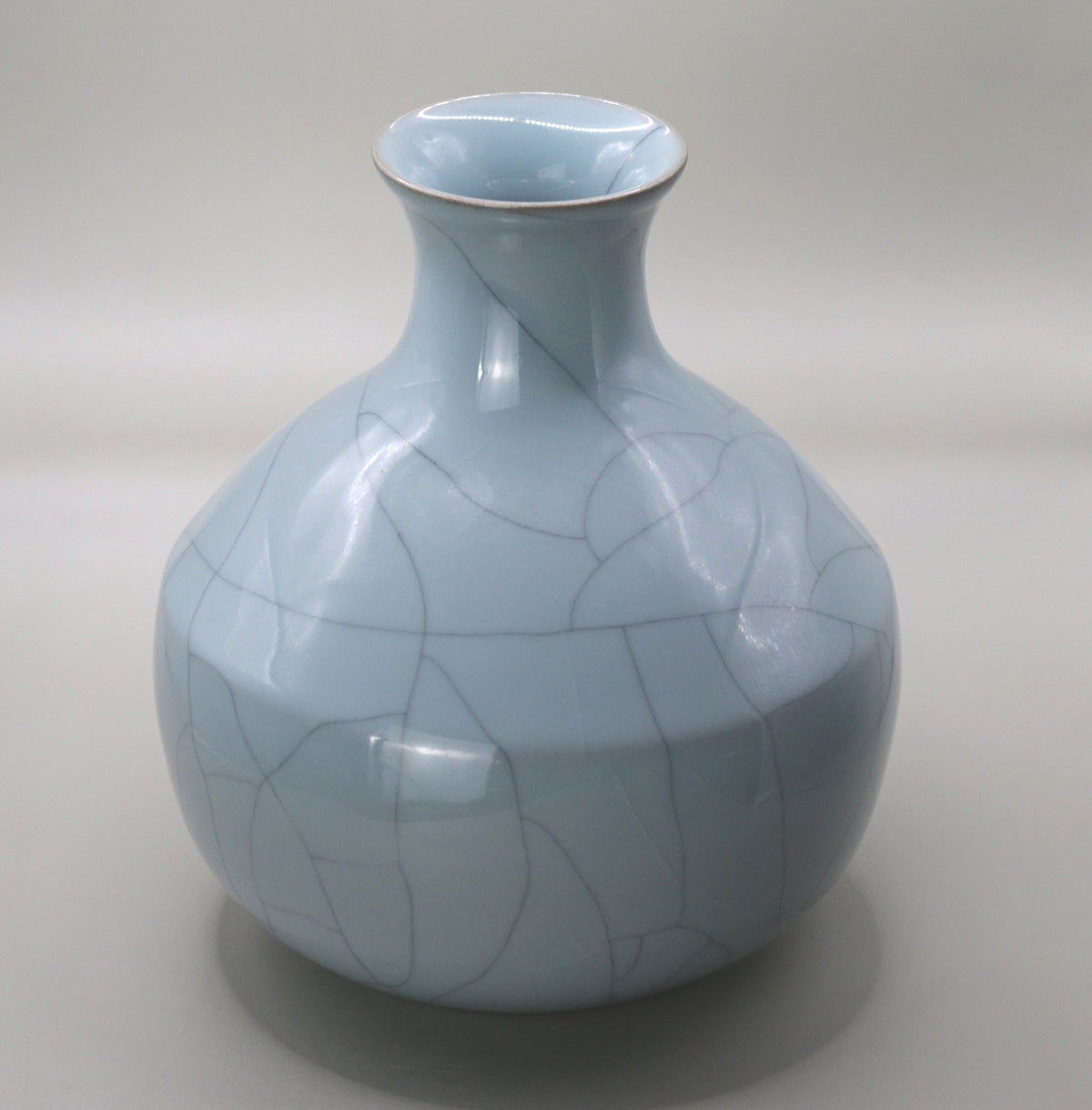
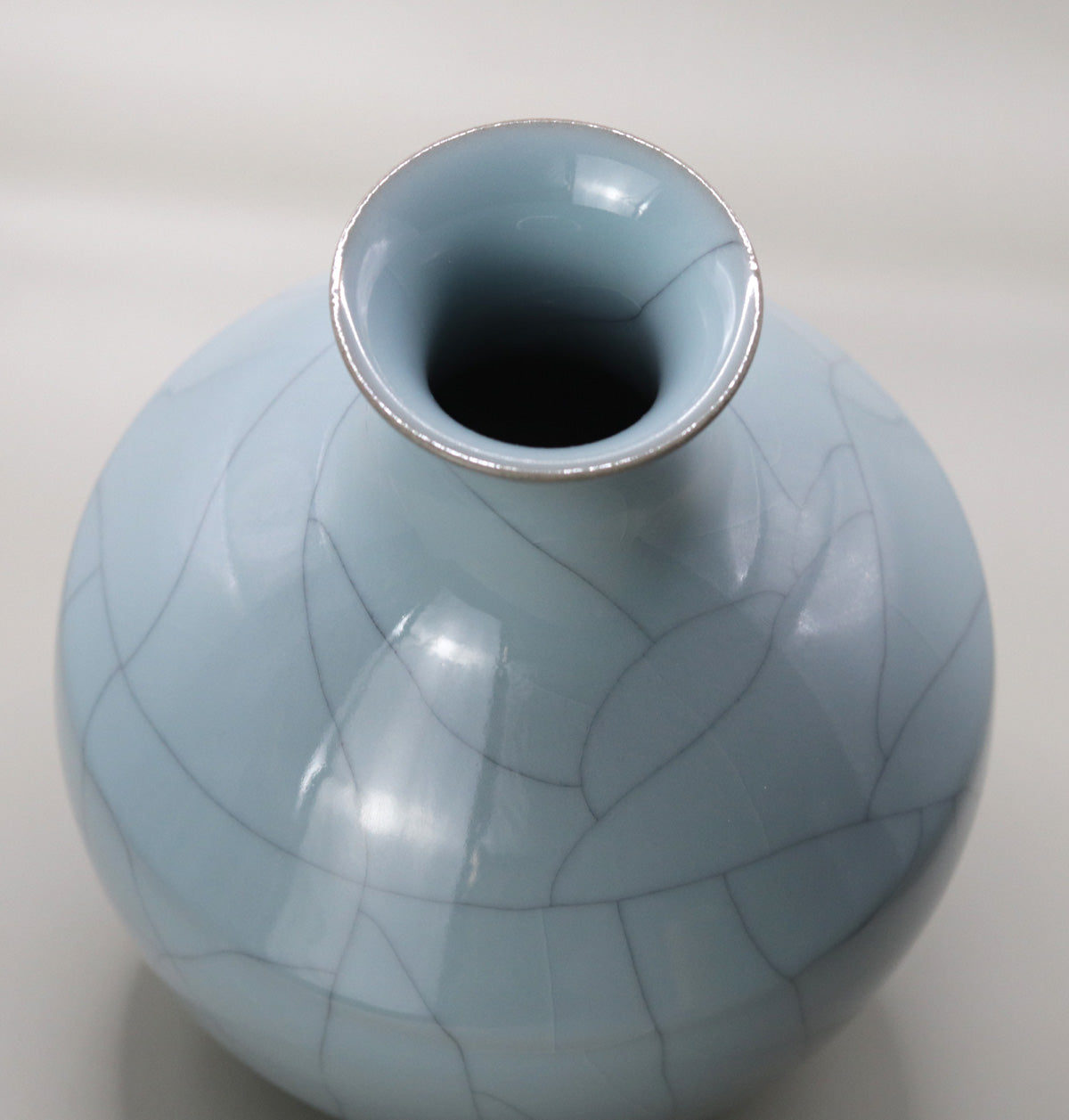
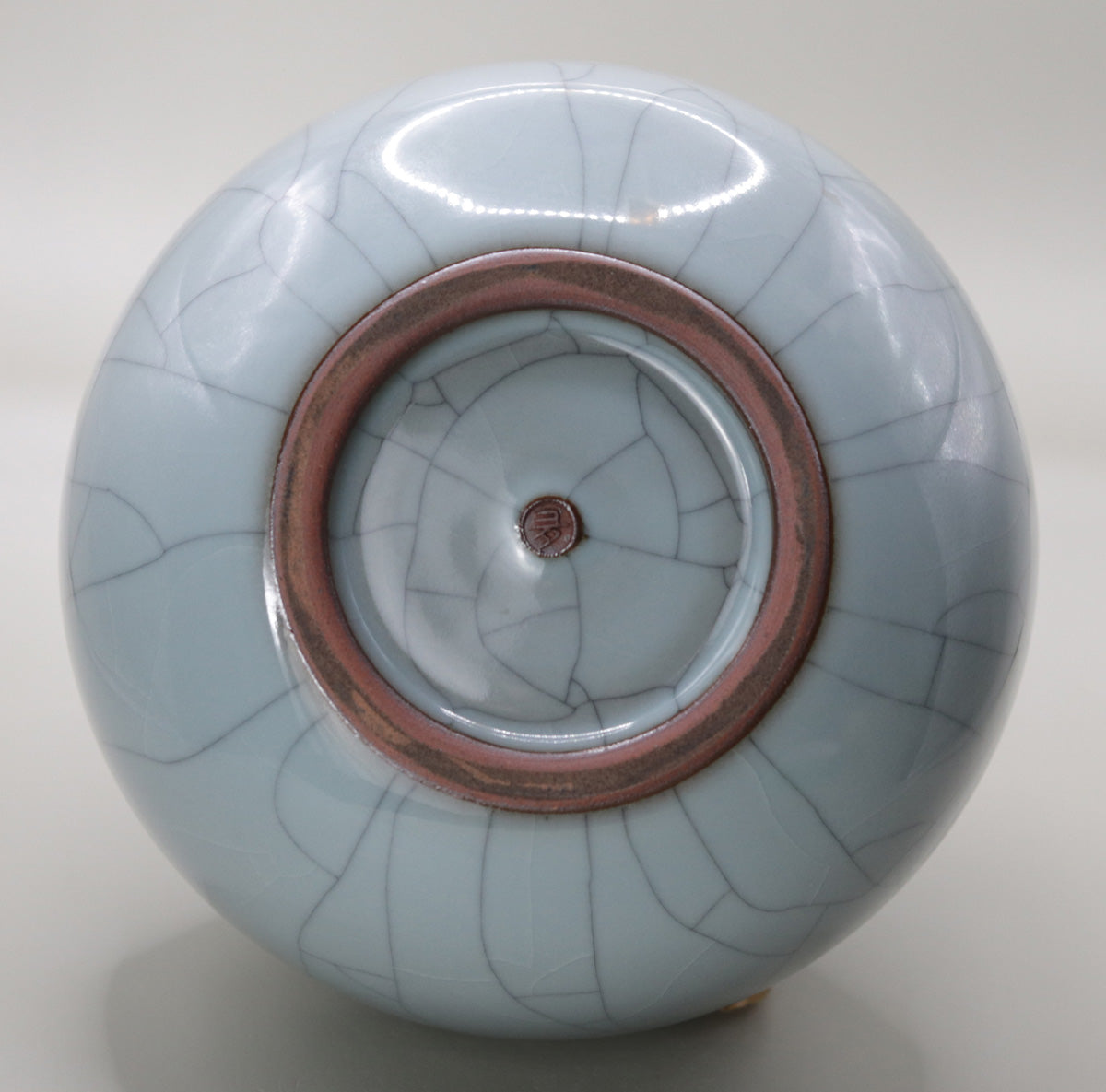
Multi-Column
-
[I will send it to you quickly and carefully]
We carefully package each product in a way that suits it best.
Also, delivery times vary depending on the piece (vessel, etc.).
Items that already come with a box will be shipped within 1-3 days of the order date.
For items that require a box to be made after your order, it will take approximately 30 days for production to be completed and then shipped.
In either case, once we have confirmed your order, we will contact you by email to inform you of the delivery date.
-
[Requests when purchasing pottery]
Even products that look the same may differ slightly in color, shape, size, etc.
The way the glaze is used, the power of the kiln, the firing method, the season, and the humidity also affect the appearance of the pottery.
Please understand the individuality of each piece of pottery and enjoy the unique warmth of handmade.

